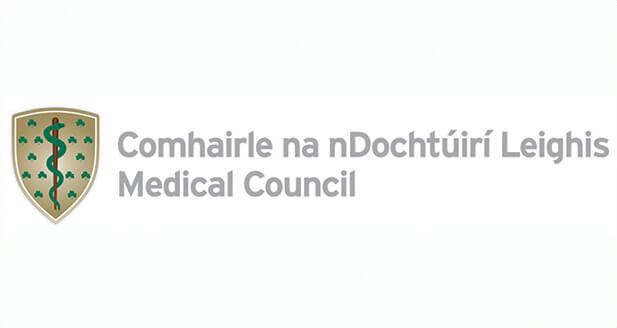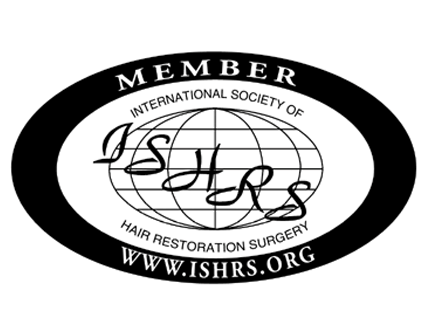Home care information for patients following hair transplant surgery
Dr. Maurice P. Collins
F.R.C.S.I., D.L.O., F.R.C.S.Ed, F.R.C.S.
Hair transplant surgery is a delicate procedure. Your adherence to these post-operative instructions is essential for optimal results. It is our aim that you are pleased with the care you receive, and we encourage you to contact us with any problems or questions. If you have any problems following the surgery please call HRBR’s office number below. If the office is unattended and you have an urgent problem, please contact the mobile number of your attending surgeon.
Office hours contact (8a.m. – 5p.m.):
Tel+353 (0)1 209 1000
E-mail: info@hrbr.ie
Post- Operative Care
Immediately Post OP
- A spray bottle and a water solution are supplied on discharge. You may use tap water when the solution provided is finished.
- You will need to spray the transplanted area and the donor every 20 minutes for the first 12 hours. When doing this put some towels around your shoulders and let all the water drip down
- You will need to spray vigorously, use both hands to ensure that you cover all the transplanted and donor area. Do not touch the transplanted hair
- Once you have completed the 12 hours of spraying you should sleep for a few hours
- Drink plenty of water during this time and eat as normal
- You may store the 1L solution bottle in the fridge
- Premedication is given during surgery and it is important that following your procedure you do not drive and that you are accompanied by a responsible adult on leaving the clinic.
Day 1 to day 3
- On day 1 (day after the surgery) to day 3, you should spray half hourly during your waking hours and sleep as normal at night
- You may use tap water when the solution provided is finished
- Spraying prevents any scab formation on the transplanted area and on the donor area. The transplanted grafts also need to be kept hydrated throughout this period, this is essential for their survival
Day 4- Day 14
- You will commence a tea tree shampoo regime on day 4
- Fill a clean bowl with tepid water, put 10 mls of shampoo in and mix it up to make it quite soapy and with a cup or bowl, pour the solution over the transplanted area and the donor area, and rinse off any soapy solution. You may pat it gently with a clean towel
- This should be done once a day from day 4 up until day 14
- Note: Do not stand under a power shower and
- You may continue spraying the donor area during day 4 to 14 to relieve any itchiness. You may keep the spray bottle in the fridge
- Your stitches (if applicable) will need to be removed between day 7 and day 10. It is advisable to return to HRBR to have these removed
- For FUE patients please attend the clinic for a post-operative check appointment two weeks post op
- FUE patients may occasionally develop yellow crusting on the recipient area approximately 7 – 10 days post op. This is not a cause for concern and will resolve after day 14
- It is advisable to start using Regaine after day 14 to enhance the growth, this should be used at night only on the transplanted area and this can be used for 6 months or continuously post operatively
Day 14 and after
- You may return to your normal hair washing regime, finish using the tea tree shampoo, return to your previous shampoo, wash the hair vigorously using both hands this will remove any crusts in the area. At this stage you may get your hair cut, colour your hair and resume using products like gels and hair sprays. For FUT patients we recommend a scissor cut only.
- It is recommended to avoid strenuous physical activity for 4 weeks post operatively for FUT (2 weeks for FUE); you should avoid gym work, swimming, cycling, tennis, golf, any heavy lifting, strenuous hill walking. This is to avoid any stretching of the scar
- When you return to physical activity you should start off lightly and build up slowly to your previous activity levels
Patients may experience the below immediately following surgery;
- Swelling: This can usually occur 24 to 48 hours after the surgery. You may notice some swelling in the forehead, which may travel down towards the eyelids. This swelling maybe asymmetrical. This will resolve itself, without intervention, usually 48 to 72 hours after it begins.
- Bleeding: there may be some bleeding directly after the surgery from the donor area, if any bleeding occurs, it is important to apply pressure with some gauze for as long as it takes to settle
- Pain: sometimes pain can occur in the donor and the transplanted area, Solpadine and Nurofen are recommended for this, and you can take these alternating every 3 hours. Please see specific instructions about pain relief provided
- Numbness/ tingling sensation in the recipient area sometimes occurs, this will resolve without intervention. It can last from weeks to months
- Infection: There is a very slight risk of infection as with any surgery. You should return to the clinic if you feel there is any signs of infection such as localised redness, or pain
For Your Information
- It is important to note that the transplanted hair will be fully embedded after day 14, that is why you can resume your normal activities at this stage
- The transplanted hair will begin to fall out, usually 2 to 4 weeks after the surgery. You will start to see the hair grow from 6 months after the surgery, this hair will be very fine and minute at first
- At 9 months 70% the hairs will have appeared, however they won’t be fully grown, it will take up to 18 months for full growth to occur
- Shedding of the native hair can also sometimes occur post operatively. This is quite rare and if it occurs it will always re-grow
Note on going on holidays post operatively
- It is possible to go on holidays after the surgery, it is important not to get a sun burn on the scalp as this will damage the skin. Do not swim in swimming pools with chlorine in the first 14 days as the chemicals may damage the grafts, it is however safe to swim in the sea in the first 14 days
- Do not dive
- After day 14 you can swim in swimming pools and apply sun lotion to the scalp and wear a hat if needed. It is advisable to always wear a cap in the sun after day 14. If you are in the sun prior to day 14, you must sit under an umbrella and avoid sitting in direct sun light for long periods
Office Hours Contact:
telephone: +353 1 2091000
e-mail: info@hrbr.ie













